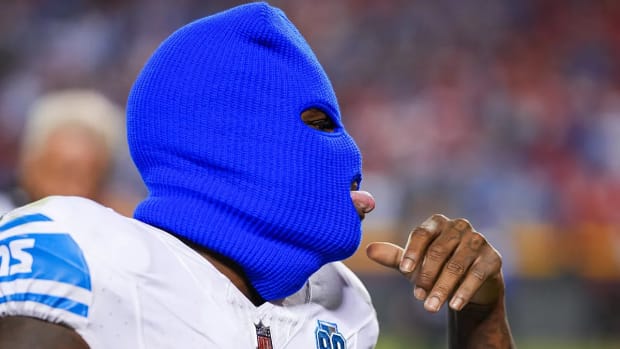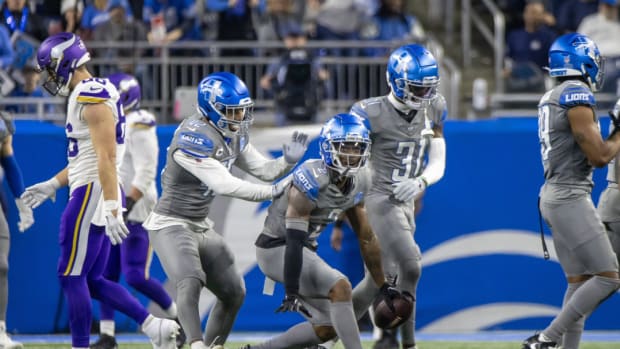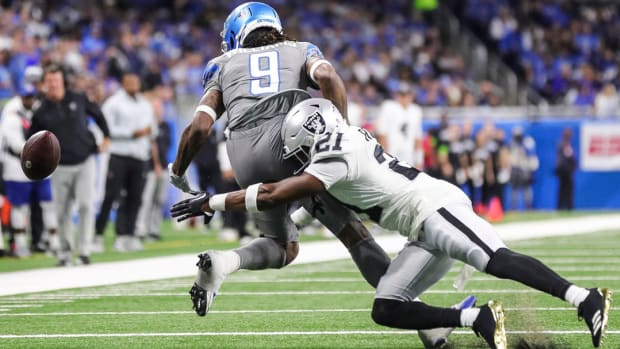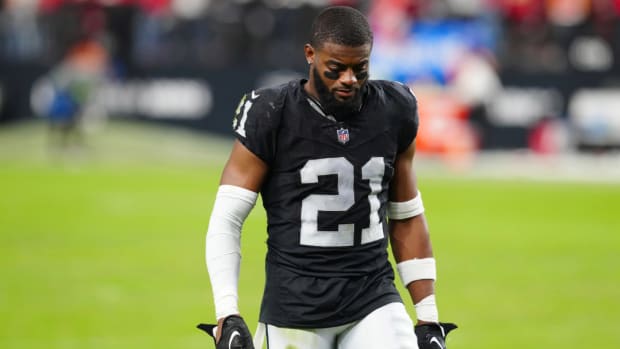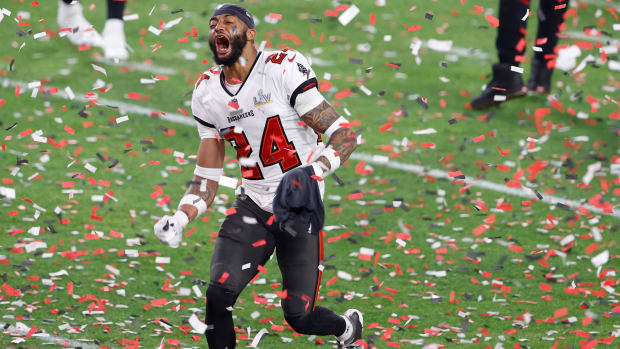Matthew Stafford vs. Jeff Driskel
Before Lions quarterback Matthew Stafford was sidelined with his back injury, not many knew much about Detroit backup Jeff Driskel.
After two games, Driskel has acquitted himself nicely, and has kept the Lions' offense moving.
Interestingly enough, Stafford and Driskel were the top-rated high school quarterbacks in their respective graduating classes (Stafford: 2006; Driskel: 2011).
Obviously, both possess plenty of talent, but have very different strengths.
Let's break down the differences between the two.
First, Driskel is a very athletic individual.
The 4.56 40-yard time he recorded at his combine is a great example of just how fleet of foot the 6-foot-4, 235-pound quarterback is.
Needless to say, that is not part of Stafford's game.
In only two games, Driskel has scrambled on eight different occasions.
Meanwhile, Stafford only had nine scrambles through the first eight games of the season.
Driskel makes more plays with his feet for sure, but he is also in more scrambling situations due to his propensity to hold onto the ball too long.
Currently, albeit a small sample size, Driskel takes almost a half-second longer to release the ball than Stafford.
In fact, Driskel takes 2.99 seconds to pass -- the slowest mark in the NFL.
In contrast, Stafford is below the league norm for his average time to pass, despite having had the most 20-plus yard pass attempts in the NFL before his back injury sidelined him.
Stafford leads the league in deep pass percentage at 19.6 percent. Meanwhile, Driskel is only throwing a deep attempt on 12.4 percent of his passes.
Lions offensive coordinator Darrell Bevell has tried to help Driskel get the ball out of his hands more quickly by upping the number of screen passes he throws.
Thus far this season, 13.1 percent of Driskel's passes have been thrown at or behind the line of scrimmage, while 8.1 percent of Stafford's passes have been.
Even with Stafford's limited mobility and Driskel's impressive elusiveness, both quarterbacks are being sacked at a very similar rate, per drop-back.
Maybe with more time with the first team, Driskel will start making quicker reads and start releasing the ball in a more timely manner.
I tend to think it isn't as much of a difficulty with making reads for Driskel, as it is his ability -- or lack thereof -- to fit the ball into tight windows.
The Lions' receivers are not known for creating separation.
In fact, as good as Kenny Golladay and Marvin Jones are at making contested catches, they don't create very much space between themselves and defenders.
Golladay is dead last in the NFL in average yards of separation per catch (1.9), while Jones is sixth from last (2.2).
Stafford was throwing the ball into tight windows on 23.4 percent of his passes -- the highest percentage in the NFL.
Driskel doesn't have a weak arm by any means, but he still isn't in the elite Stafford tier for arm strength.
Stafford has never necessarily been known for his pinpoint accuracy.
But even then, Driskel isn't nearly as accurate.
Driskel's 58.3 percent completion rate falls well below the league average.
The only current starting quarterbacks with a lower completion percentage are rookies Dwayne Haskins and Ryan Finley, as well as fourth-year journeyman Brandon Allen.
Still, the Lions have managed to produce impressive point totals with Driskel behind center.
That doesn't equate to him being nearly as efficient as his counterpart Stafford, however.
Stafford is tied for the third-most yards per pass attempt in the league with 8.6.
Meanwhile, Driskel's 6.6 yards per attempt pale in comparison.
Going by total yardage, Stafford has averaged 312 yards per game through the air, compared to 239 yards per game for Driskel. Quite the disparity, to say the least.
It's important to note, though, that one of the two starts from Driskel was against a top-10 defense with no first-team practice reps beforehand -- Week 10 against the Bears.
Going back to Driskel's ability to run, there's no doubt he has added another element to the Lions' offense via his mobility.
Driskel has averaged 44 rushing yards per game.
Stafford, in stark contrast, averaged 8.3 yards a game on the ground in the eight games he played in before his injury.
Overall, Driskel has shown he is a very capable backup quarterback, and should be considered for clipboard-holder duties moving into 2020.
This year, the Lions have been fortunate to have him to keep the games watchable.
But let's not get carried away ... he does not make Stafford and his contract expendable.
More: 3 Coaches the Lions Could Target to Replace Patricia



